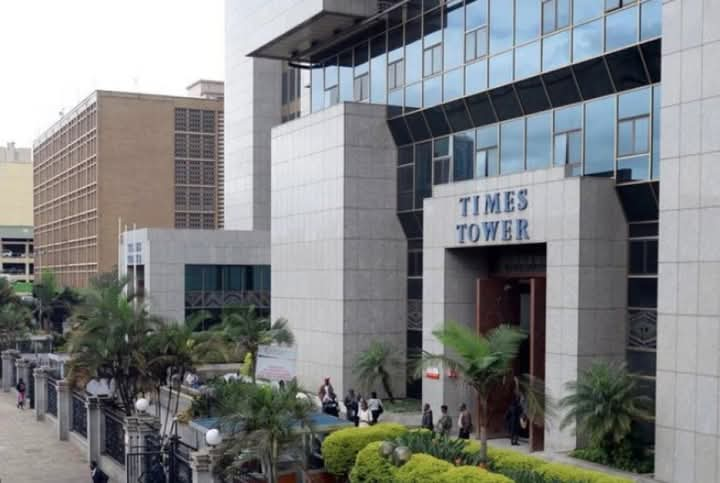Kenyan commercial banks achieved record pre-tax profits of Sh262.3 billion in 2024, marking a 15.9% increase from 2023's Sh226.3 billion, driven by high lending rates and substantial returns from government securities, according to Central Bank of Kenya (CBK) data.
This performance occurred during a period when lending rates exceeded 25% and Treasury bill yields reached 16%.
The historic earnings were achieved despite a 1.4% contraction in private sector lending - the sharpest decline in 22 years - and rising non-performing loans that peaked at 16.7% in June.
AD

The CBK is now pressuring banks to reduce interest rates to stimulate private sector credit growth, threatening fines up to Sh20 million for institutions and Sh1 million for executives who don't comply.
Market analysts anticipate record dividend payouts in March 2025, though declining interest rates in the current year may moderate future earnings growth.
The banks' windfall profits, while impressive, highlight a growing structural risk in Kenya's financial system as institutions increasingly rely on government paper - which now accounts for 38% of banking assets, the highest since 2002's bond market reforms - creating a sovereign-bank nexus that leaves lenders vulnerable to fiscal shocks while starving SMEs of credit.
This paradigm echoes the 1990s Latin American debt crisis dynamics, where banks became overexposed to sovereign debt at the expense of productive sectors.
When legacy institutions can earn risk-free returns exceeding 16% on government paper, what incentives remain to develop the credit risk models and sector-specific expertise needed to fund Kenya's next generation of agritech startups and manufacturing SMEs?
The Central Bank of Kenya has implemented aggressive measures to force banks to reduce lending rates, including imposing daily fines of up to Sh100,000 per loan account in breach and penalties of up to Sh20 million or three times the monetary gain for banks that fail to comply.
The CBK cut its benchmark rate for the fourth consecutive time to 10.75% from 11.25% and reduced the cash reserve ratio from 4.25% to 3.25%, freeing up Sh73.7 billion for lending, as private sector credit contracted by 1.4% in December against an ideal growth of 12-15%.
The policy changes come amid concerns that banks have been slow to pass on previous rate cuts to borrowers, with only four banks having reduced their rates by at least 1.75 percentage points since August.
CBK has begun physical inspections of banks to ensure compliance with the Risk-Based Credit Pricing Model, as high lending rates have led to increased non-performing loans, which stood at 16.4% in December 2024, though showing slight improvement from 16.7% in September.
In other News, The Kenya Revenue Authority’s (KRA) Customs and Border Control unit has surpassed it Monthly target as Customs taxes reached a historic monthly performance of Sh82.554 billion in January 2025.

KRA Customs kicked off the second half of the 2024/2025 financial year on an upward trajectory after surpassing its January target of Sh74.439 billion by collecting a surplus of Sh8.116 billion, reflecting a performance rate of 110.9%.
KRA Commissioner, Customs and Border Control, Dr. Lilian Nyawanda, speaking to JULISHA.CO.KE on Friday, January 7, attributed the Upsurge to reforms she has initiated in the Taxman's Customs.
The performance, represents a 27.0% growth compared to the 4.8% growth recorded in the first half of the financial year 2024/2025 (July-December 2024) period.
“This positive revenue performance is attributed to reforms within Customs, including the establishment of the Centralised Release Operations.
Under this new process, release officers are stationed at a centralised location and allocated customs declarations randomly for release.
This approach has significantly resulted in a more objective release process of managing risks and improving revenue mobilisation efforts,” said Dr. Nyawanda.
She explained that another key factor that contributed to the strong revenue performance was the growth in non-petroleum taxes of 11.6%, compared to January 2024.
Petroleum taxes had a strong performance, registering a growth of 55.9% against the same period last year.
According to Dr. Nyawanda, this growth in petroleum taxes was largely driven by a 6.6% increase in overall oil volumes, with a significant growth in petrol (89.7%) and diesel (65.0%) resulting in above-target performance across various tax heads, including VAT oil, excise duty oils, and fuel levies, among others.
“These results reflect the ongoing commitment by KRA to improve revenue mobilisation efforts and ensure that revenue targets are consistently met, contributing to the growth and stability of the nation’s economy,” said Dr. Nyawanda.
